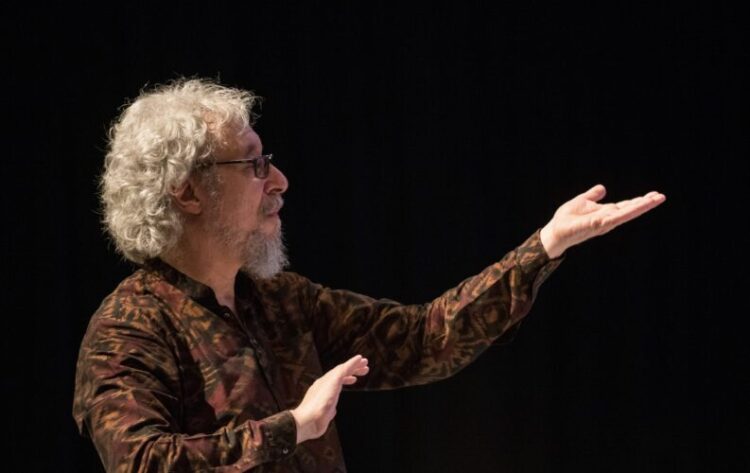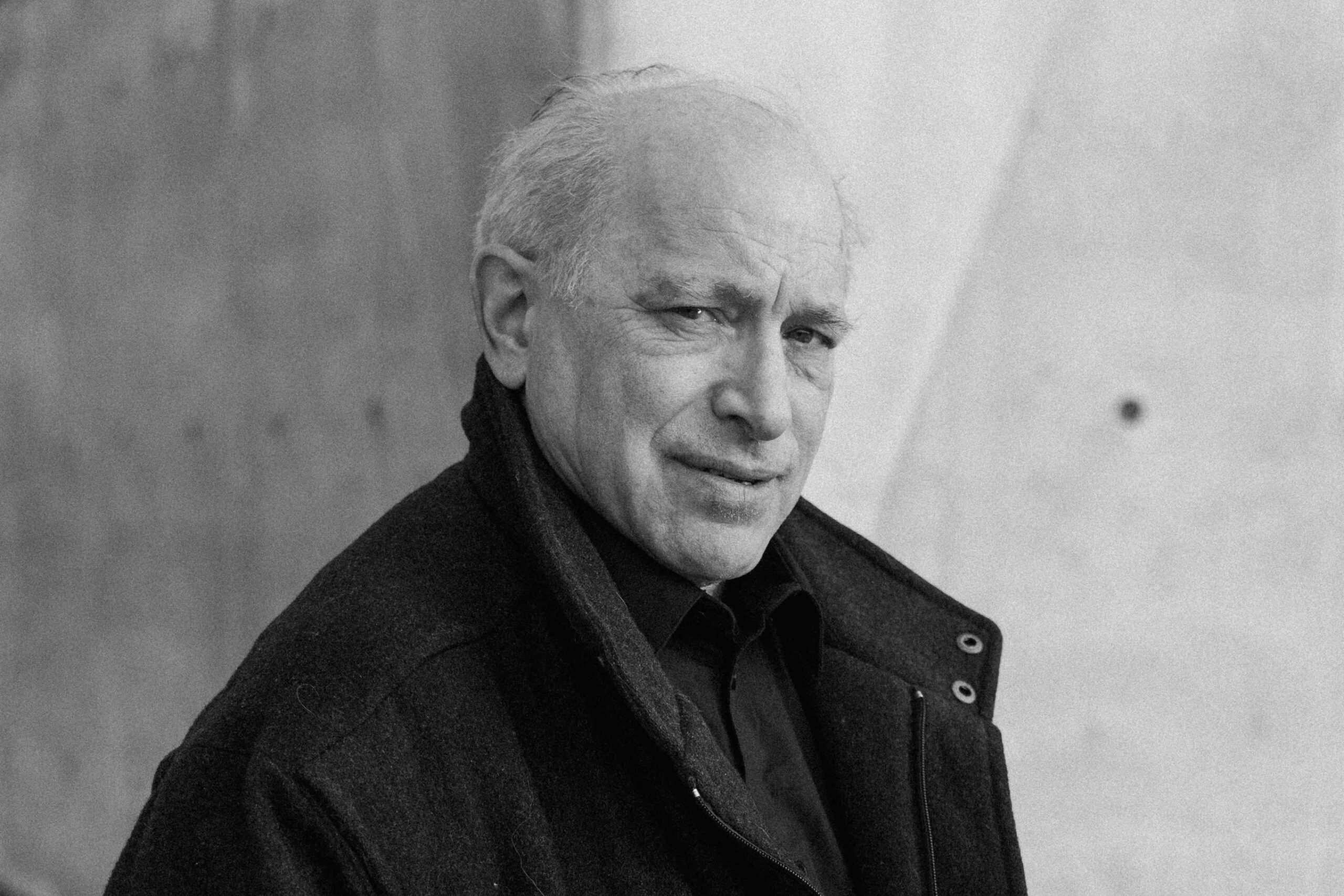Vibrational Miracle: A Conversation with Adam Rudolph (Part Two)
|
Getting your Trinity Audio player ready...
|
We continue our conversation with Adam Rudolph with a deeper dive into his new book, Sonic Elements: Matrices, Cosmograms, and Ostinatos of Circularity (Meta, 2022). Sonic Elements builds upon the lessons Rudolph has learned throughout his career (which you can read more on in part one) to present two primary types of tools which can guide musicians in their creative process, grid-like matrices and more free-flowing cosmograms. Both make use of the intervals between notes but generally provide artists the ability to create new music a bit removed from their existing cultural biases. The book is a fascinating read, in part because it also does not limit its target audience to musicians. Instead, throughout Sonic Elements, Rudolph also leaves writings on topics as varied as the limits of binary thinking, the importance of nature, and the Taoist concept of the Qi.
PostGenre: You mentioned that Yusef [Lateef] always aimed to do something musically that he had never done before. The way you both composed The World at Peace (Meta, 1995) is perhaps a great example.
Adam Rudolph: Yeah, the approach we used to compose the work was Yusef’s idea. He asked me to write for half of the ensemble, and he wrote for the other half. He chose musicians for six of the twelve instrumental parts and let me know, approximately, the tempo and instruments to write for, and then I chose the other six and gave him the same general guidelines. Ultimately, we co-composed without knowing what the other person was writing until we got to rehearsal. It was very interesting to compose music that way. We were endlessly able to think of new creative processes like this that we could use to make music.
One of the interesting things about new creative processes is how they make your music sound atypical. When you create with a new process, the music will always sound different than what came before. The process we used for The World at Peace was similar to how surrealist painters would use what they called “exquisite corpse” where they would paint on each other’s paintings. But it is not common in music not to hear what a co-composer is writing until you reach rehearsal. We ended up using all of the pieces from our process, but it was fascinating how they came to be.
PG: And that focus on new processes seemingly ties directly into Sonic Elements. Throughout the book, you outline new approaches to composition that are a little more removed from the Western tradition. As one example, you avoid using Western notation.
AR: Right, Sonic Elements does not rely on Western notation and instead uses cosmograms and matrices. It reflects the same creative process I use with my Go: Organic Orchestra and some of my through-composed music. The approach gives musicians who perform the music the ability to interpret it in a way that allows them more freedom of choice.
PG: And moving away from traditional Western notation provides that freedom?
AR: There are many ways of communicating ideas musically, and the use of Western musical notation is just one of them. Western notation shouldn’t be taken as dogma or even as something central to musical composition and performance. We in the West often have it at the cultural center because it is how we are taught those things in schools. But ideas of Western notation are mere constructs.
One of the things I have discovered from working with musicians from all over the world is that, of course, not everybody uses that kind of notation, or uses notation at all, to communicate their ideas. Western notation is a pretty recent invention and is also very limited. It evolved out of trying to notate and direct Gregorian chant. Rhythmic notation emerged from the idea of polyphony. Western notation has nothing to do with notating musical ideas from other cultural perspectives. With cosmograms and matrices, you can move through music in many more ways than in Western notation.
PG: As an example, you need not read the matrices and cosmograms from left to right. It seems that the multi-directional aspect is also an effort to escape Western biases as many languages in the world read in a different direction.
AR: Right, with cosmograms and matrices, you are not bound to go from left to right as with Western musical notation. But, you know, John Coltrane even recorded a version of his most famous ballad, “Naima”, where he played it backward. With a matrix, you can move right, left, up, or down and that directional openness presents new ways to discover sounds. I think the ability to go in multiple directions reflects how languages are read and written around the world. Some languages are read right to left – like Hebrew- and others are read vertically- like ancient Chinese script.
But the cosmograms and matrices ultimately serve solely to provide guidance. They do not dictate that you read or do things in a certain direction. Sonic Elements seeks to open up people’s minds on intervals. With the book, I hope to make people think differently about intervals and rhythms. The use of cosmograms and matrices is all about listening to what you hear in your mind and generating it. The process has little to do with seeing things written a particular way. And, because of that, they open up your capacity to think about things in new ways. The more knowledge you have, the freer you can be in the moment as a composer or spontaneous composer to project your inner feelings and thoughts onto the music.
PG: Although the cosmograms do not focus on the act of seeing, they are also works of visual art. Do you see a connection between crafting visual art and the making of music?
AR: The cosmograms evolved out of trying to figure out how to visually represent a musical concept without verbally explaining it. The cosmograms evolved out of a different need than the matrices, which are focused on how you can potentially move through things. Cosmograms came from trying to figure out how to best visually represent musical ideas and to show the potentialities of what could be generated from those in a non-linear way. With cosmograms, the ideas of range, tempo, and pitch are all left to the musician’s imagination. It’s the musician’s responsibility to figure out what to do with these components.
PG: You have been working with these matrices and cosmograms for a long time. How did you start putting them together?
AR: I guess it’s like everything that I’ve done. I wouldn’t describe myself as primarily an autodidact; as someone self-taught. I learned things in school and from many great teachers. But in terms of how I weave those things together- for example, how I play hand drums and compose- I figured things out by myself. I started working on the matrices when I started the Go: Organic Orchestra back in the late 90s. The matrices were a somewhat intuitive inspiration. I somehow knew they would work very well in an improvisational setting.
The matrices aren’t completely devoid of precedent. I think the first person to use 12-tone matrices was Arnold Schoenberg with what he called “the magic square.” But the matrices are done in a way that, stylistically, is a little more fanciful than Schoenberg’s work. I created them primarily through trial and error. I don’t recall a specific moment of inspiration.
PG: Don Cherry introduced you to Ornette [Coleman]’s concept of harmolodics. There has been some lack of clarity about what exactly those concepts encompass, but they are certainly tied to compositional freedom. Are your works with the matrices and cosmograms guided by harmolodic concepts?
AR: Well, both his system and my work share an emphasis on artistic freedom. In the late 50s and early 60s, musicians like Ornette, Eric Dolphy, John Coltrane, Cecil Taylor, and Yusef Lateef started moving away from using the harmonic form based on blues changes and “I Got Rhythm” changes. They moved towards new frameworks for composing and improvising or, as I like to call it, spontaneous composition. They started looking at ways of organizing intervals to guide those creative processes.
I’m not sure I’m qualified to speak as an expert in harmolodics. I did get to know Ornette pretty well. I went to an acupuncturist a couple of blocks away from his department for about a year. I would go by his place every week and we would hang out. Ornette was such a generous and beautiful person, and his ideas of harmolodics are incredibly deep.
What I share in Sonic Elements is not a system but methods designed to make you rethink things musically. The book is like a key to open you to thinking about things in new ways. All of us come into music because we hear something we love and find attractive about a particular style of music. But there comes a point where, as an artist, you may want to move more into a deeper idea of working with more pure elements that are transcendent of style. When you think of people like Dolphy, Coltrane, or Yusef, they all found their own ways to use intervals. Ornette is the same. I think Ornette purposely did not codify his concepts of harmolodics because it was not just one thing. It was a way for artists to open their minds to think about music in different ways. Ornette also spoke of harmolodics in a philosophical sense that was broader than music and addressed creativity more generally and even humanity itself.
PG: Which ties into the essays in the book as well, something that even non-musicians can use to their benefit.
AR: Yes, that broader perspective is exactly why I chose to include many of my philosophical essays in Sonic Elements. I wanted the book to share ideas on how we think about creativity, not merely provide composition-based information.
PG: But focused solely on the musician reader, Sonic Elements provides many different matrices and cosmograms that a musician could mess with to create new music, though perhaps “mess with” is not the best description.
AR: Use them to find your own way; to experiment with and make them your own. It was important to me that Sonic Elements not be a book that you work your way through from beginning to end. I wanted someone to be able to open the book up to random pages and see what calls to them or resonates with them in that moment. Hopefully, you will find some ideas you can use. If they don’t speak to you, you can abandon them. Either way, Sonic Elements is meant to spark a reader’s inspiration.
PG: Related to that openness, the book does not merely outline a series of matrices, but also tells the reader how to make their own. You present more than just a bunch of patterns and allow the reader to figure out how best to apply them, you even provide a framework so they can figure out how to create their own.
AR: Right. Again, that goes back to the idea that Sonic Elements is not a how-to book but designed to present another way of looking at music. I hope it inspires people to use some of those ideas or come up with their own. That’s the whole point of it. The whole tradition is to sound like yourself, develop your voice, learn to generate processes, cultivate intuition, open your mind to inspiration, and dare to follow through with whatever ideas you develop, no matter how far out they might seem. That’s where freedom is; where inventiveness lies; where creativity flourishes.
Sonic Elements: Matrices, Cosmograms, and Ostinatos of Circularity is now available for purchase on Bandcamp. Symphonic Tone Poem for Brother Yusef is now available on Strut Records. More information on Rudolph can be found on the website for his label, Meta Records.
Photo credit: Jaci Downs




One thought on “Vibrational Miracle: A Conversation with Adam Rudolph (Part Two)”